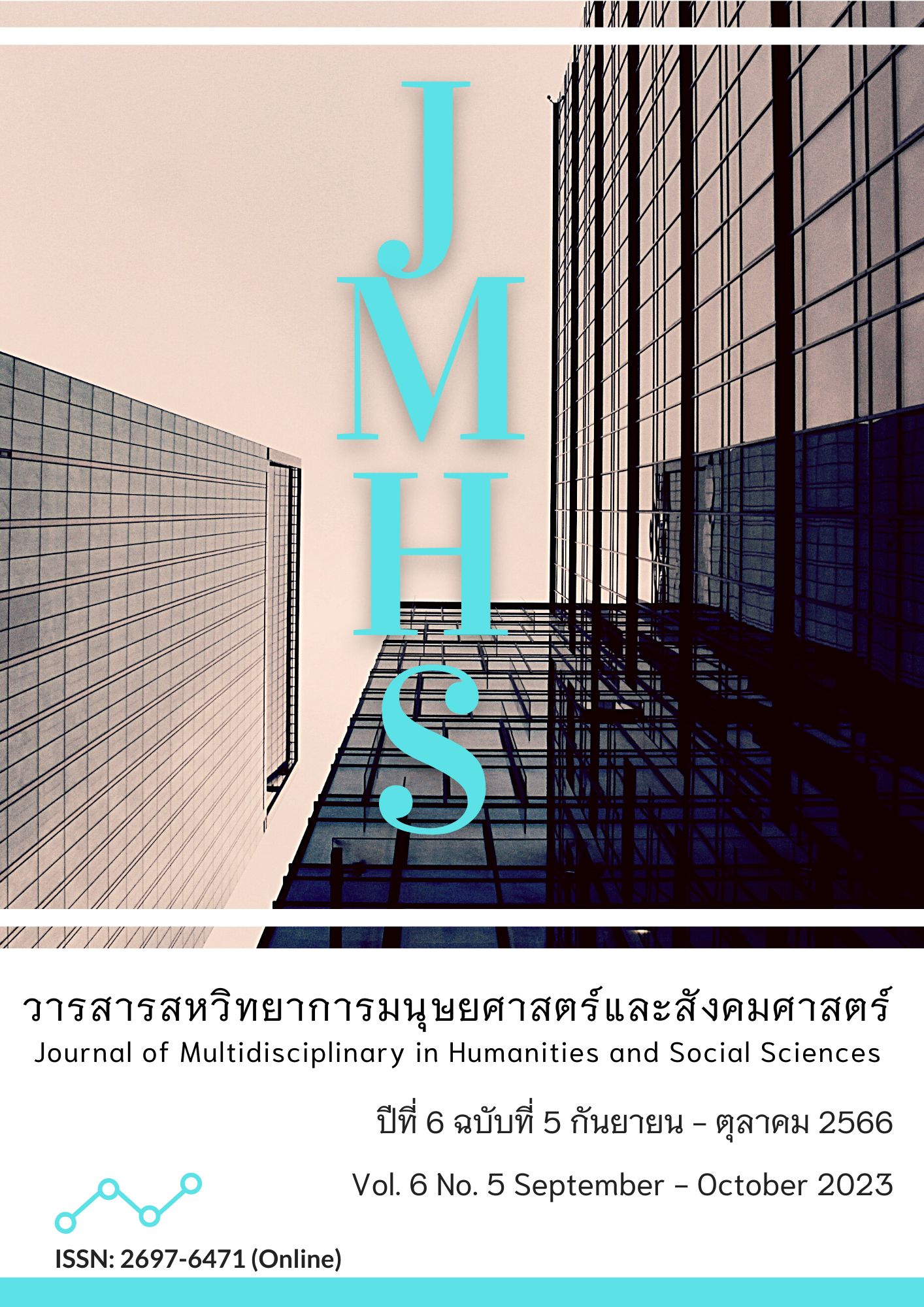The Decision Making to Revisit Thailand of Chinese Free Independent Travelers
Main Article Content
Abstract
The tourism industry is an important economic factor for Thailand. Income from tourists traveling to Thailand Before the COVID-19 crisis situation, during the year 2015 to 2020, income could be made into the country of 9.04 trillion baht when ranked by income from foreign tourists who arrived. In the country, it was found that the top 5 countries that generate the most income for the Thai tourism industry are 1. China, 2. Russia, 3. Malaysia, 4. United Kingdom and 5. Japan. Foreign tourists who travel the most are Chinese tourists. representing 52.96 percent of all tourists This academic article aims to present Tourism push and pull tourist satisfaction tourist loyalty Willingness to return to travel again independent Chinese tourists (FIT) so that the study can use the information presented to develop and research decision-making patterns for repeat travel of independent Chinese tourists in Thailand. To take advantage and be able to develop the economic growth of Thailand in the future.
Article Details

This work is licensed under a Creative Commons Attribution-NonCommercial-NoDerivatives 4.0 International License.
Views and opinions appearing in the Journal it is the responsibility of the author of the article, and does not constitute the view and responsibility of the editorial team.
References
สำนักพัฒนารัฐบาลดิจิทัล. (2565). รายงานสรุปจำนวนนักท่องเที่ยวที่เดินทางเข้าประเทศไทยและรายได้จากนักท่องเที่ยวต่างชาติที่เดินทางเข้าประเทศไทย ข้อมูลปี 2015-2020. สืบค้นจาก https://data.go.th/blog/tourism-2015-2020
การท่องเที่ยวแห่งประเทศไทย. (2563). Crazy Rich Chinese Travelers นักท่องเที่ยวจีนรุ่นใหม่ใช้จ่ายสูง. TAT Review Magazine. สืบค้นจาก https://tatreviewmagazine.com/?article=crazy-rich-chinese-travelers-นักท่องเที่ยวจีนรุ่นใหม่ใช้จ่ายสูง
ปฏิภาณ บัณฑุรัตน์ และเสรี วงษ์มณฑา. (2563). ความพึงพอใจของนักท่องเที่ยวชาวจีนที่ใช้บริการสปาในประเทศไทย. วารสารรัชต์ภาคย์, 14(35), 92-103.
อิทธิชัย อรรถกระวีสุนทร. (2563). นักท่องเที่ยวจีนกลุ่ม FIT ทำไมถึงสำคัญกับการท่องเที่ยวไทย. กรุงเทพธุรกิจ. สืบค้นจาก https://www.bangkokbiznews.com/blogs/columnist/124316
Crompton, J. L., & Mckay, S. L. (1997). Motives of Visitors Attending Festival Events. Annals of Tourism Research, 24(2), 425-439. https://doi.org/10.1016/S0160-7383(97)80010-2
Dann, M. S. (1977). Anomie, Ego-Enhancement and Tourism. Annals of Tourism Research, 4(4), 184-194. https://doi.org/10.1016/0160-7383(77)90037-8
Ke, W., & Yu, S. C. (2023). Abusive Supervision and Employee Creativity: The Mediating Effect of Role Identification and Organizational Support. International Journal of Multidisciplinary in Management and Tourism, 7(1), 39–52. https://doi.org/10.14456/ijmmt.2023.4
Lei, W., Teerapornlertratt, P., Phuvakeereevivat, A., & Kumboon, B. (2023). The Development of Value Co-creation of New Retail in Taian City, The People’s Republic of China. International Journal of Multidisciplinary in Management and Tourism, 7(1), 1–12. https://doi.org/10.14456/ijmmt.2023.1
Loureiro, S. M. C., & Gonzalez, F. J. M. (2008). The Importance of Quality, Satisfaction, Trust, and Image in Relation to Rural Tourist Loyalty. Journal of Travel and Tourism Marketing, 25(2), 117-136. https://doi.org/10.1080/10548400802402321
Patrick, C. J., Edens, J. F., Poythress, N. G., Lilienfeld, S. O., & Benning, S. D. (2006). Construct Validity of the Psychopathic Personality Inventory Two-Factor Model with Offenders. Psychological Assessment, 18(2), 204–208. https://doi.org/10.1037/1040-3590.18.2.204
Robinson, S., & Etherington, L. (2006). Customer Loyalty: A Guide for Time Travelers. New York: Palgrave Macmillan.
Tolman, E. C. (1959). Performance Vectors: A Theoretical and Experimental Attack Upon Emphasis, Effect, and Repression. American Psychologist, 14(1), 1–7. https://doi.org/10.1037/h0044061


